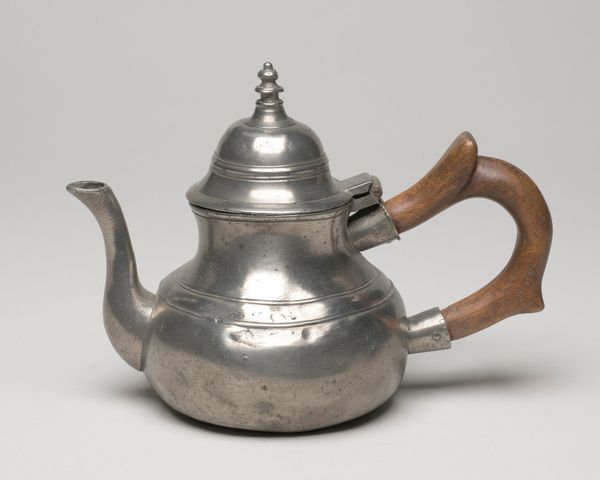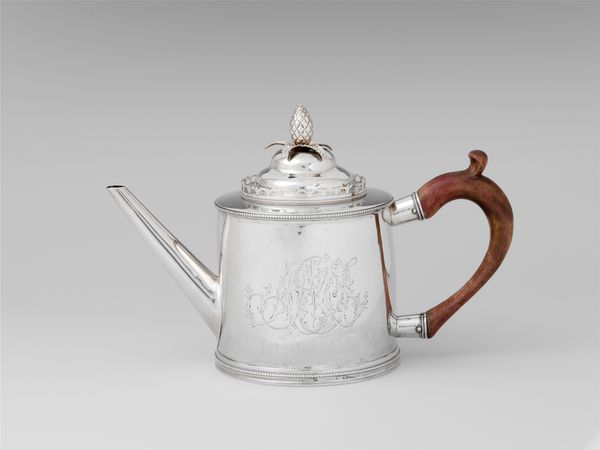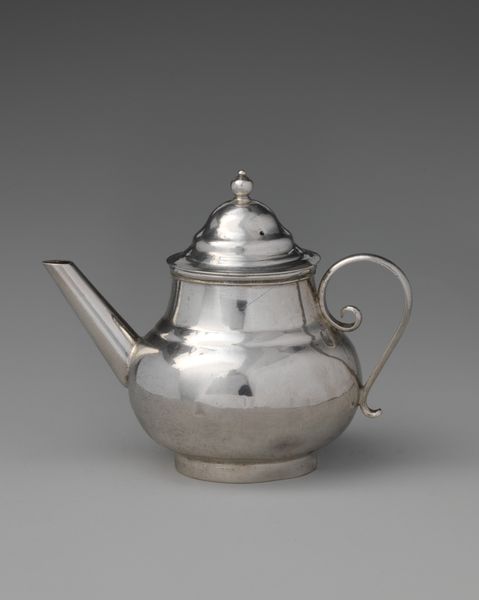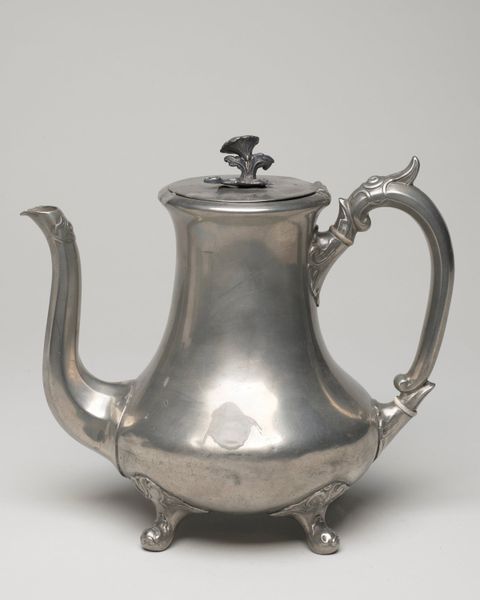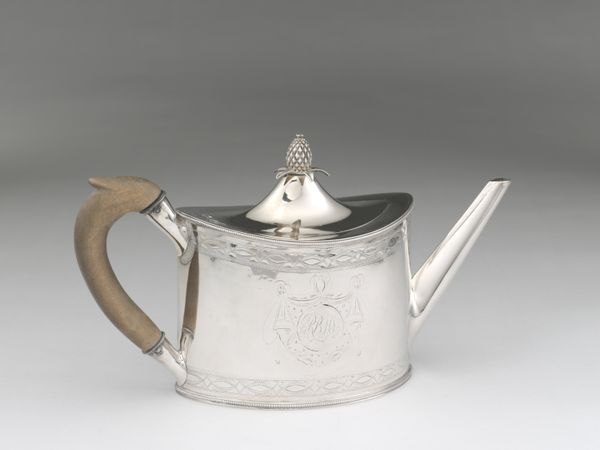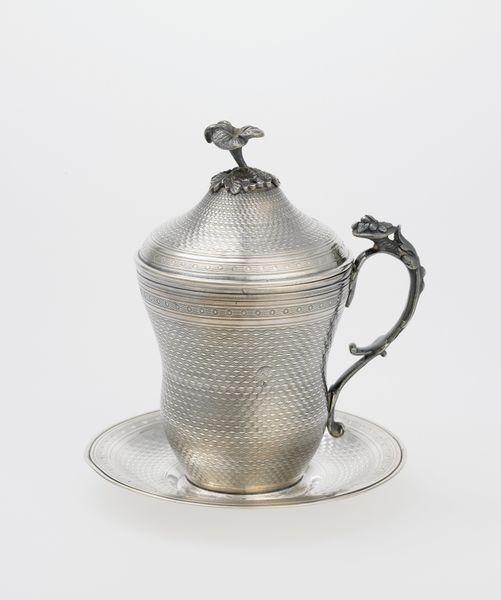
silver, metal
#
art-nouveau
#
silver
#
metal
#
decorative-art
Dimensions: height 18.5 cm, width 16 cm, diameter 10.5 cm, weight 348 gr
Copyright: Rijks Museum: Open Domain
Editor: Here we have "Theepot," a silver and metal teapot made around 1905 by Orivit. It's gleaming and so delicate! It looks very much in the Art Nouveau style. How can we contextualize such an object? Curator: Well, think about the society this object was made for. Art Nouveau was a rejection of industrial mass production, a movement toward handcrafted, unique objects for everyday life. Consider how possessing such a refined object, mass produced as it may be, might elevate the ritual of tea drinking in the domestic sphere. What is your interpretation of the visual motifs? Editor: I notice the stylized plant forms radiating upwards. Were these motifs intended to connect the owner to nature? Curator: Exactly! The natural world was viewed as inherently beautiful, and surrounding oneself with its imagery—even on a teapot—suggested good taste and refinement, signalling a certain level of social status. These objects reinforced ideals about nature and taste within the upper middle classes, for example. Editor: So, beyond just serving tea, this teapot functioned as a subtle marker of class and cultural awareness? Curator: Precisely. The decorative arts served a significant social function, and understanding that allows us to interpret the work through the lens of cultural aspiration and distinction. Editor: It's fascinating to consider how an everyday object could carry so much social meaning. Thanks, I learned a lot today. Curator: You're most welcome. It is essential to look at the public function of even seemingly simple objects.
Comments
No comments
Be the first to comment and join the conversation on the ultimate creative platform.

